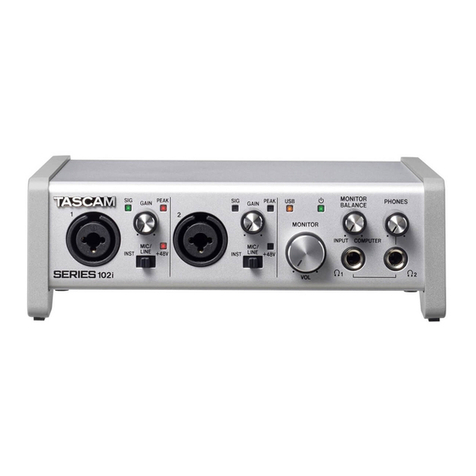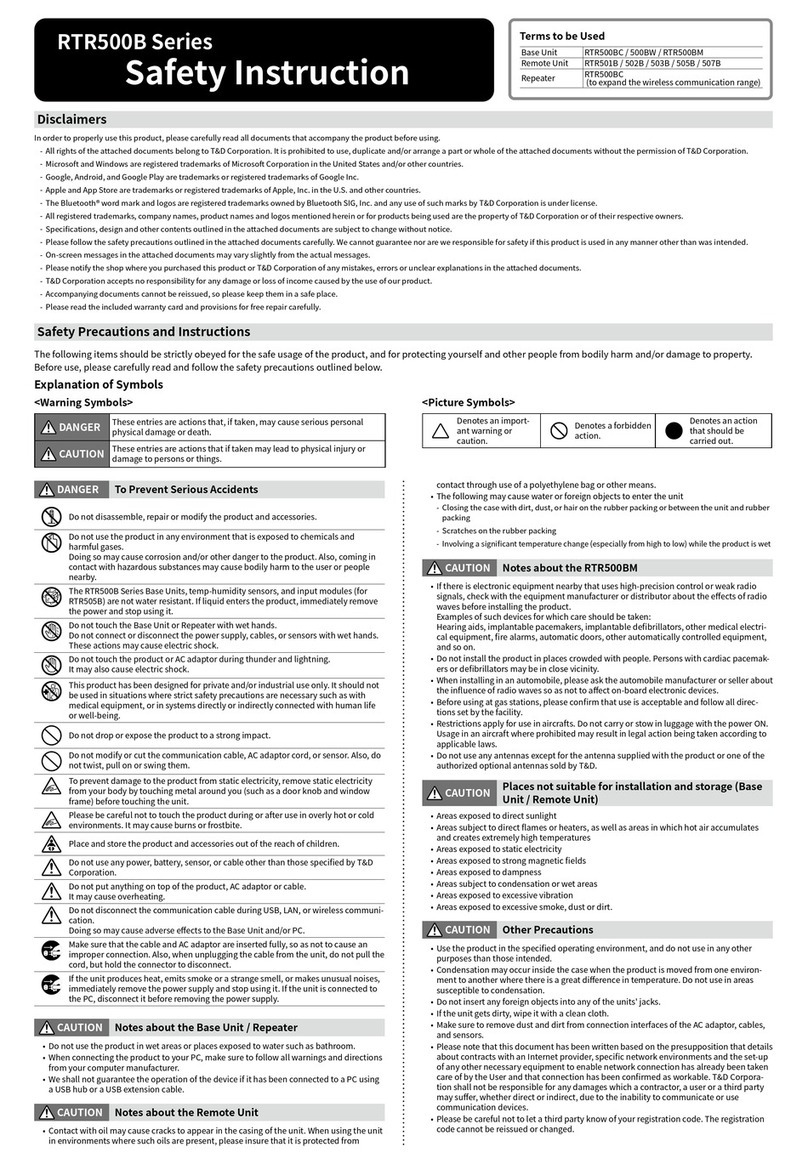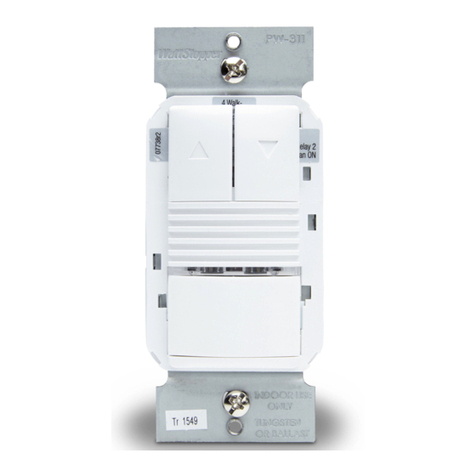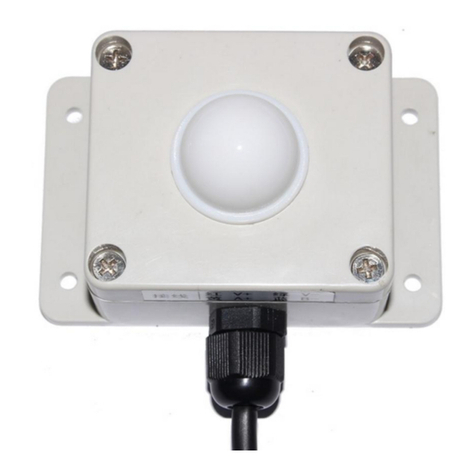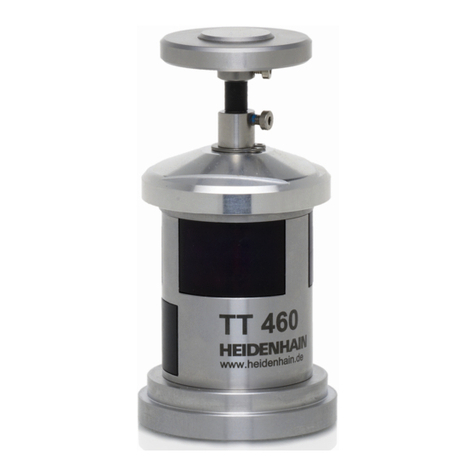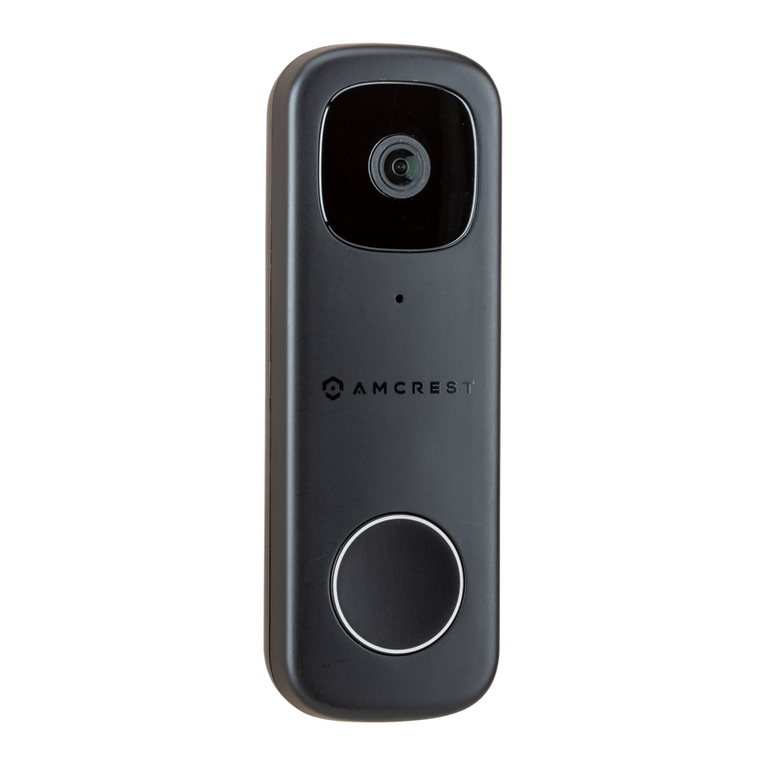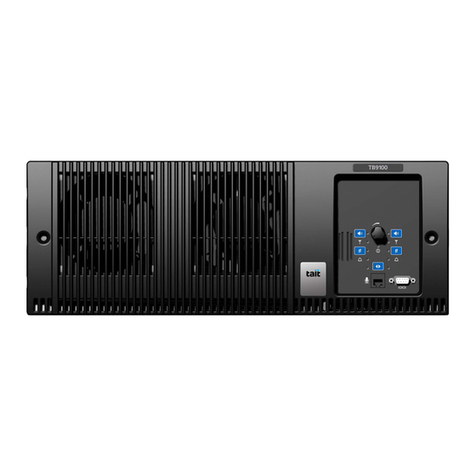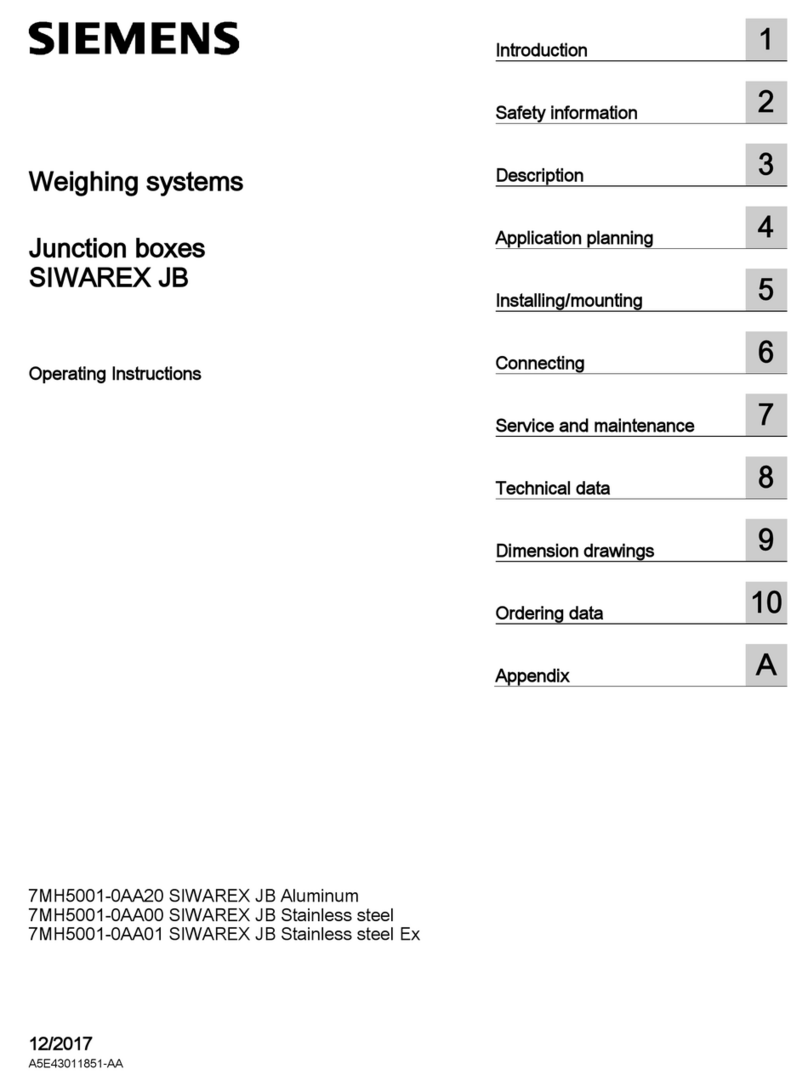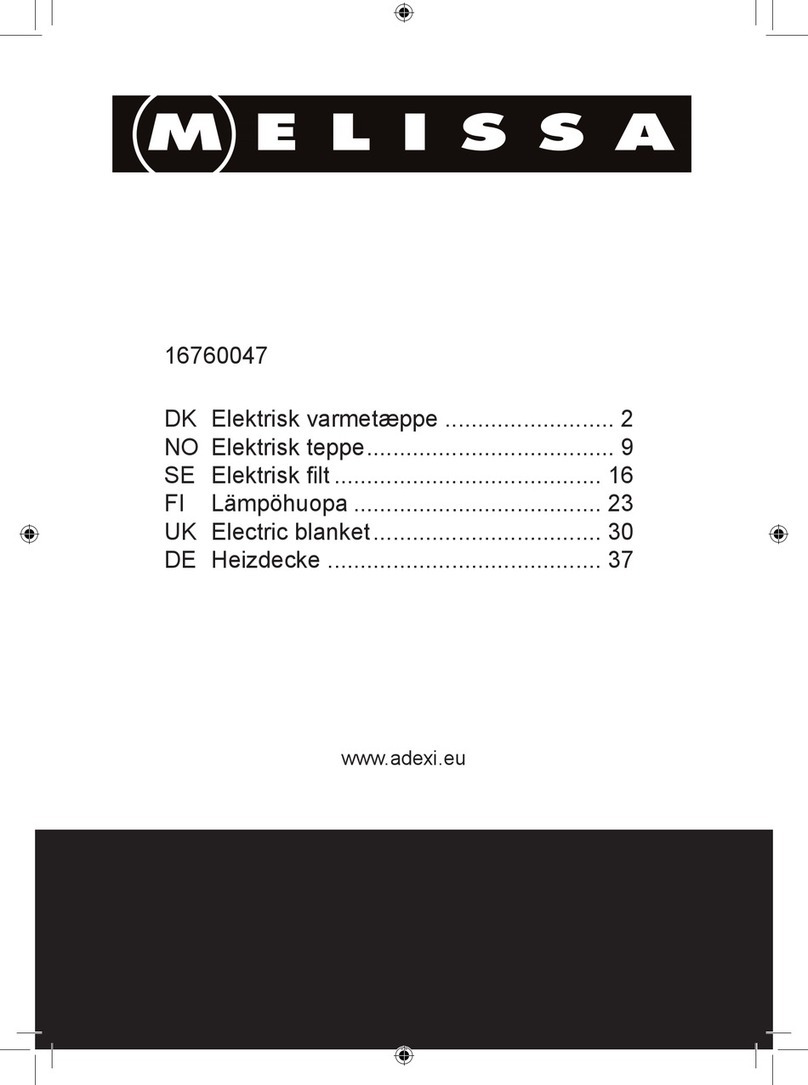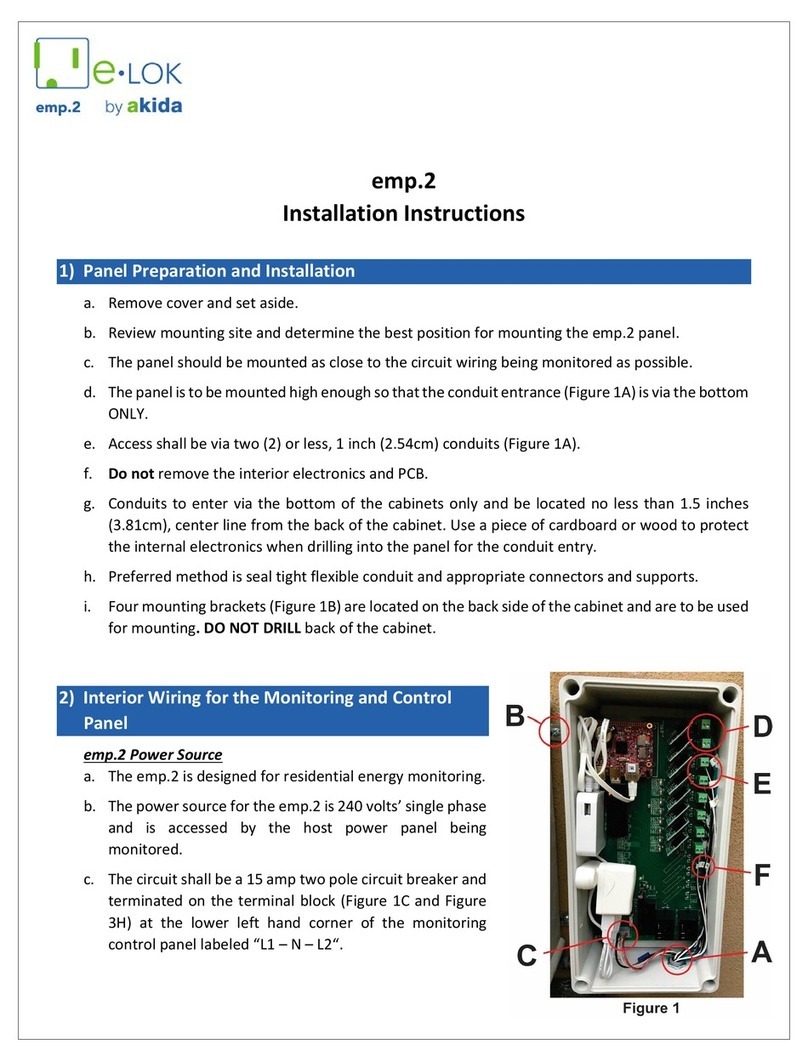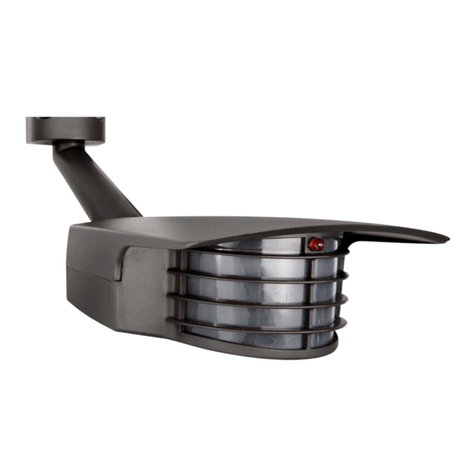Auto Anchor AutoAnchor 710 User manual

AutoAnchor 710
Version 1.3
OWNER’S MANUAL


AutoAnchor 710 (V1.3) Owner’s Manual
Part 1 Important Information 2
Part 2 Installation 4
Part 3 Set Up 16
Part 4 Operation 28
Part 5 Maintenance 35
Part 6 Troubleshooting 36
Index 40
TABLE OF CONTENTS
To the best of our knowledge the information in this manual was correct at the time
of printing. However, the AutoAnchor products are continuously being reviewed
and improved and product specifications may be changed without notice. The
latest product specifications may not be reflected in this version of the manual. The
documentation relating to the AutoAnchor products is created in the English language
and may be translated from English to another language. In the event of any conflict
between translated documents, the English language version will be the official version.
AutoAnchor documents are available on the website www.autoanchor.co.nz
1

• The AA710 should only be installed by a qualified marine electrician. Do not
attempt to install the AA710 unless you are suitably qualified.
• This manual supports the use of the AA710 only. The appropriate manufacturer’s
instructions must be followed for the installation and use of the windlass and
thruster products, or other equipment, the AA710 is set up to control.
• There must be an alternative method available to operate the windlass, thruster or
other equipment. A failure of the wireless link will result in loss of control of the
equipment via the AA710.
• The AA710 can be fitted to most vertical windlasses. A horizontal windlass may
require a sensor holder or a custom designed sensor which is not included in the
standard pack. Check with your supplier or the AutoAnchor manufacturer.
• The AA710 must be fitted to a windlass with a dual direction control box or
solenoid pack.
• Alloy, steel or carbon fibre will restrict the wireless communication. The AA702
base station must be positioned to avoid this. Contact your supplier or the
AutoAnchor manufacturer for options.
• Information for installation and operation of the AA710 is supplied, including
pre-set windlass profile lists, wiring diagrams, templates, the Owner’s Manual and
the Quick User Guide. All documents must be left on board for the owner.
• Non compliance with the instructions could impair the windlass, thruster and the
AA710 operation, and could result in personal injury and/or damage to the boat.
• Non compliance with the instructions will negate the manufacturer’s warranty.
• The AA710 manufacturer and supplier accept no liability for personal injury or
property damage resulting from failure to follow the installation and operation
instructions or the use of the AA710 in a way that may cause accidents or
damage or that may violate the law.
• All the technical and cable specifications must be checked and adhered to.
• Wiring diagrams must be followed without modification.
• Before use the AA710 must be correctly set up for all the equipment it is to control
and tested in a safe environment. The AA710 will not count correctly if the
windlass selection is wrong or the windlass is not standard (eg it is installed
with a different chainwheel or motor).
• All installations must be carried out in accordance with USCG, ABYC, NMMA and
BMEA requirements.
• When this product reaches the end of its useful life it must be disposed of in
accordance with local regulations.
PART 1 IMPORTANT INFORMATION
READ BEFORE INSTALLING OR USING THE AUTOANCHOR
2

RADIO FREQUENCY COMPLIANCE
FCC Information:
This device complies with Part 15 of the FCC Rules. Operation is subject to the following
two conditions: (1) this device may not cause harmful interference and (2) this device must
accept any interference received, including interference that may cause undesired
operation.
Modifications not expressly approved by the manufacturer could void the user’s authority to
operate this equipment.
This device generates, uses, and can radiate radio frequency energy and, if not installed
and used in accordance with the manufacturer’s instructions, may cause harmful
interference to radio communications.
ESTI Information (CE):
This device is compliant with the essential requirements of the R&TTE Directive 99/5/EC,
meeting the European harmonized EMC and low-voltage/safety standards.
ELECTROMAGNETIC COMPATIBILITY (EMC)
FCC Information:
This device complies with CFR47 Part 15 of FCC Rules for Class B equipment.
ESTI Information (CE):
This device meets the relevant standards set out in European Standard EN 60945:2002 for
maritime navigation and radio communication equipment and systems. These standardsThese standards
are intended to provide reasonable protection against interference by other emission
generating products on the boat. Compliance with these standards is no guarantee that
interference will not occur in a particular installation. The installation instructions must be
followed to minimise the potential for interference.
AA710 equipment (AA702 base station and AA710 remote console) must be installed at
least 3 ft (1m) away from any equipment transmitting or cables carrying radio signals eg
VHF radios, modified sine wave inverters, cables and antennas or radar antennas; and at
least 6 ft (2m) away from any SSB equipment. AA702 cables must be installed at least 1.5
ft (500mm) away from such items. 3
TECHNICAL SPECIFICATIONS
Parameter AA710 Remote Console AA702 Base Station
Power Supply 2 x AA 1.5V Batteries 12V/24V DC
Current Consumption N/A 50mA
Output Current Draw N/A 12V DC: 10mA min/4A max
24V DC: 20mA min/4A max
IP Rating IP67 IP67
Operating Temperature
Range
23oF to 140oF (-5oC to 60oC) 23oF to 140oF (-5oC to 60oC)
Wireless Transmission 2.4GHz ISM Band, IEEE 802.15.4 Compliant, 64 Bit Unique ID
Wireless Range Typical Minimum 10m (30ft). Range depends on installation.
System can support up to 4 base stations and 4 consoles.

PART 2 INSTALLATION
INSTALLING THE AA710 TO OPERATE A WINDLASS
The windlass must be installed according to the windlass manufacturer’s instructions with
the correct size rope and chain. It must also be regularly serviced and lubricated. For
smooth operation, the windlass requires a good quality, bow roller and a swivel where the
anchor joins the chain.
RODE
Combination Rope and Chain Rode: must have a minimum of 10 ft (3 m) of chain. Chain
must be galvanised steel. Rope should be a good quality, nylon anchor rope. Type 66 or
equivalent.
Chain Only Rode: can be stainless or galvanised steel.
MAGNET AND SENSOR INSTALLATION
Critical to Operation: Correct magnet and sensor installation is critical to windlass
operation using the AA710. If it is not possible to comply with these instructions please
check with the AutoAnchor manufacturer or your supplier for other options. Some
windlasses are predrilled for sensor and magnet fitting.
Reed Switch Sensors: Some windlasses are supplied pre-fitted with a reed switch
sensor. Reed switch sensors can only count the revolutions of the chainwheel. This works
for a chain only windlass but it does not provide an accurate count for rope and chain rode.
If you use a reed switch sensor with rope and chain, the display may read zero when there
is rode still deployed. For an accurate rope and chain count, the reed switch sensor should
be replaced with the AA grey sensor (#9067). Reed switch sensors must have a 10mm x
8mm magnet (#9061) and the gap between the reed switch sensor and the magnet must
be a minimum of 3mm and a maximum of 5mm.
Magnet Fit: If your chainwheel is not predrilled,
drill a hole 6.5mm (1/4”) diameter and 5mm
(3/16”) deep to fit the magnet in the underside
of a spoke in the bottom of the chainwheel. The
magnet must be aligned with the sensor.
See Fig 1.
Magnet Seal: Insert the magnet into the hole and
cover it with a minimum of 1mm of epoxy to seal
it from salt water. Failure to do this will impair the
magnet’s strength and durability.
MAGNET INSTALLATION FOR VERTICAL WINDLASSES
Magnet Size: 6mm x 4mm magnet (#9009).
A larger magnet may be used. Check with
your supplier.
Vertical Windlasses Using Chain Only Rode
Fig 1
Seal with minimum 1mm epoxy.
Magnet
Sensor
4

Gap Between the Sensor and Magnet:
Grey AutoAnchor Sensor (#9067):
6mm x 4mm Magnet (#9009): Minimum 3mm and Maximum 30mm
10mm x 8mm Magnet (#9061): Minimum 3mm and Maximum 50mm
Black 2 wire AutoAnchor Sensor (#9008): Minimum 3mm and Maximum 8mm
Reed Switch 2 wire Sensor: Minimum 3mm and Maximum 5mm
(Must use a 10mm x 8 mm magnet)
Magnet Polarity: Not relevant when using the grey AA sensor (#9067) or a reed switch
sensor. If retrofitting, using the original black AA sensor (#9008) the south pole (white side)
of the magnet must face the sensor.
Vertical Windlasses Using Rope and Chain Rode
The rode must run between the sensor and magnet for an accurate rope and chain count.
If your windlass is prefitted with a magnet in the bottom of the chainwheel you need to
remove it and fit a new magnet in the top of the chainwheel. Refer to Fig 2.
Magnet Size: 10mm x 8mm magnet (#9061).
An 8mm x 6mm magnet (#9052) may be used on
smaller windlasses. Check with your supplier.
Magnet Fit: If the windlass is not pre-drilled, drill a
hole 10.3mm (13/32”) diameter and 9.5mm (3/8”)
deep into a spoke in the top of the chainwheel.
The magnet and sensor must be aligned so that
the anchor rode passes between them. (See Figs
2 & 3). The centre of the magnet and the centre of
the sensor may be up to 10mm (3/8”) out of direct
alignment. (See Fig 6). Templates and drilling
instructions are supplied for some windlasses.
Magnet Seal: Insert the magnet into the hole and
cover with a minimum of 1mm of epoxy to seal it
from salt water. Failure to do this will impair the
magnet’s durability.
Sensor
Magnet
Fig 2
Fig 4
Seal with minimum 1mm epoxy.
Magnet
Magnet Chainwheel
Spoke
Fig 3
Sensor
Gap Between the Sensor and Magnet:
Grey 3 wire AutoAnchor Sensor (#9067):
10mm x 8mm Magnet (#9061): Minimum 35mm and maximum 50mm
8mm x 6mm Magnet (9052): Minimum 30mm and maximum 44mm
Magnet Polarity: Not relevant.
5

SENSOR INSTALLATION FOR VERTICAL WINDLASSES
For accurate rope and chain counting the AA710 must be fitted using the grey AutoAnchor
sensor (#9067) supplied in the kit. Some windlasses are prefitted with a reed switch sen-
sor. The reed switch sensor can be used for chain only counting.
The sensor is fitted into the windlass deckplate. Some windlasses are predrilled for the
sensor. Others have a dimple or mark to show where the sensor should be fitted. Check
with the AutoAnchor or windlass supplier if you are not sure where to drill for the sensor.
Sensor Position for Vertical Windlasses Using Chain Only Rode: The sensor hole
can be drilled anywhere on the deckplate provided it is in alignment with the magnet in the
chainwheel and the gap between the sensor and magnet will be correct.
Sensor Position for Vertical Windlasses Using Rope and Chain Rode: The hole must
be within the sensor position range at the stern end of the windlass (See Fig 5). The
sensor must also be aligned with the magnet so that the rode passes between the
sensor and the magnet. The centre of the magnet and the centre of the sensor may be up
to 10mm out of direct alignment. (See Fig 6)
Drilling the Deckplate: If the windlass is not factory drilled, drill a hole 10.3 mm (13/32”)
diameter through the windlass deckplate. Some windlasses will be marked for sensor
fitting. Check the AutoAnchor drilling templates supplied with this kit.
Drilling the Deck: Before drilling into the deck, ensure there is nothing below the deck
that could be damaged and that any hole you drill will not weaken the boat’s structure. Drill
a hole 10.3mm (13/32”) diameter through the deck. Ensure this hole is directly in line with
the sensor hole in the deckplate.
Do not force the sensor into the hole. Hammering the sensor head can damage the
internal electronics. Ensure the sensor head is positioned so that it will not be hit
by the chainwheel during windlass operation and that it is at least 300mm (1ft) away
from the battery and motor cables, then secure the sensor into the deckplate with
silicone.
Sensor Connection: The sensor is
plugged direct into the AA702 base station.
Do not leave the cable hanging loose,
it must be tied in place with cable ties.
Extension cable and field connectors are
available.
Sensor Plug
Stern
Sensor Position Range
Bow
Chainwheel
90o
Anchor Locker
Rode
Fig 5 Fig 6 Sensor & Magnet Alignment
10mm
Sensor
Magnet
Sensor
Magnet
6

Before starting check with the AutoAnchor manufacturer, or supplier, that you can
t a sensor to your windlass. There are several sensor options for windlasses using
chain only rode but if your windlass uses rope and chain rode it may not be possible
to t the sensor for an accurate rope count.
HORIZONTAL WINDLASSES
Magnet Size: 6mm x 4mm magnet (#9009).
A larger magnet may be used. Check with your supplier.
Magnet Fit: If your chainwheel is not predrilled, drill a hole 6.5mm (1/4”) diameter and
5mm (3/16”) deep in the underside of a spoke or in the edge of the chainwheel.
See Fig 7a & 7b.
Magnet Seal: Insert the magnet into the hole and cover it with a minimum of 1mm of epoxy
to seal it from salt water. Failure to do this will impair the magnet’s strength and durability.
Gap Between the Sensor and Magnet:
Grey or Flat 3 wire AutoAnchor Sensor (#9067 or #9058):
6mm x 4mm Magnet (#9009): Minimum 3mm and Maximum 30mm
10mm x 8mm Magnet (#9061): Minimum 3mm and Maximum 50mm
Black 2 wire AutoAnchor Sensor (#9008): Minimum 3mm and Maximum 8mm
Reed Switch 2 wire Sensor: Minimum 3mm and Maximum 5mm
(Must use a 10mm x 8 mm magnet)
Magnet Polarity: If retrofitting, using the original black 2 wire AA sensor (#9008) the
south pole (white side) of the magnet must face the sensor. Magnet polarity is
not relevant when using the other AA sensors or a reed switch sensor.
Horizontal Windlasses Using Chain Only Rode
MAGNET INSTALLATION FOR HORIZONTAL WINDLASSES
Fig 7b EDGE
Sensor Holder
Magnet
Sensor
Seal with
minimum
1mm epoxy.
Fig 7a BASE
Magnet
Flat
Sensor
Seal with minimum
1mm epoxy
7

Magnet Size: 10mm x 8mm magnet (#9061). An 8mm x 6mm magnet (#9052) may be
used. Check with your supplier.
Magnet Fit: If the windlass is not pre-drilled, drill a hole 10.3mm (13/32”) diameter and
9.5mm (3/8”) deep into a spoke in the top of the chainwheel. The magnet and sensor must
be aligned so that the anchor rode passes between them. See Fig 8. The centre of the
magnet and the centre of the sensor may be up to 10mm (3/8”) out of direct alignment.
Magnet Seal: Insert the magnet into the hole and cover with a minimum of 1mm of epoxy
to seal it from salt water. Failure to do this will impair the magnet’s durability. See Fig 9
Gap Between the Sensor and Magnet:
Grey or Flat 3 wire AutoAnchor Sensor (#9067 or #9045):
10mm x 8mm (#9061) Magnet: Minimum 35mm and maximum 50mm
8mm x 6mm (#9052) Magnet: Minimum 30mm and maximum 44mm
Magnet Polarity: Not relevant.
Horizontal Windlasses Using Rope and Chain Rode
Chainwheel
spoke
Fig 8
Magnet
Magnet Sensor
Fig 9
Seal with
minimum 1mm
epoxy.
Magnet
The standard sensor (#9051) is
cylindrical 35mm long and 10mm in
diameter. This sensor may be fitted
inside the windlass housing (See Fig
10a) or it can be fitted using a sensor
holder fixed to the deck to sit under
the chainwheel (See Fig 10b). The
AutoAnchor sensor holder (#9070) is not
included in the standard kit. Check with
your supplier.
Standard Sensor Fig 10b
SENSOR INSTALLATION FOR HORIZONTAL WINDLASSES
Horizontal Windlasses Using Chain Only Rode
8
Sensor Holder
Magnet
Sensor
Fig 10a
Magnet
Sensor

AutoAnchor also makes a 3 wire flat sensor (# 9045) that
can be fixed to the exterior housing of the windlass (See
Fig 11a) or inside the windlass housing (See Fig 11b).
Secure the sensor using a good quality neutral cure
silicone or a strong adhesive eg. Sikaflex 291 or 3M 5200.
The magnet is aligned with the cross on the sensor. This
sensor requires a female plug attached to the cable.
Fig 11a
Sensor Sensor
Windlass
Housing Windlass
Housing
Fig 11b
Flat Sensor
For an accurate rope and chain count the rode must run between the sensor and magnet.
On a horizontal windlass this area is limited to the top of the stern quadrant. (See Fig 12).
To count rope and chain the sensor must be fitted within this quadrant.
Sensor Position Range
Top of Stern Quadrant
Bow
Anchor Locker
Stern
Fig 12
Horizontal Windlasses Using Rope and Chain Rode
It may not be possible to fit the sensor to achieve an accurate rope and chain count on your
horizontal windlass. Please check with the AutoAnchor manufacturer, or supplier, to see if
you can fit the AA710 to your windlass.
Some windlasses are designed with a space to fit
the sensor internally. For other windlasses it may
be possible to use the AutoAnchor flat sensor and
fix it inside the windlass housing (See Fig 13b) or,
on the exterior of the windlass housing behind the
chainwheel. (See Fig 13a). The magnet must be
aligned with the cross on the flat sensor.
Sealed Rope and Chain Windlasses
Some rope and chain horizontal windlasses are sealed so it is not possible to fit the sensor
inside the windlass housing. If there is sufficient space between the chainwheel and the
windlass housing, the sensor can be fitted externally (See Fig 13a), or it can be fitted using
a sensor holder as for an all-chain system (See Fig 10).
Fig 13a
Sensor Sensor
Windlass
Housing Windlass
Housing
Magnet
Fig 13b
Magnet
9

Drilling the Deck: Before drilling into the deck, ensure there is nothing below the deck
that could be damaged and that any hole you drill will not weaken the boat’s structure. Drill
a hole 10.3mm (13/32”) diameter through the deck. Ensure this hole is directly in line with
the sensor hole in the deckplate.
Fitting the Sensor: Ensure the cable is protected against any moving parts in the
windlass. Do not force the sensor. Hammering the sensor head can damage the internal
electronics. Ensure the sensor head is positioned so that it will not be hit by the chainwheel
during windlass operation and that it is at least 1ft (300mm) away from the battery and
motor cables.
INSTALLING THE AA710 TO OPERATE A THRUSTER
Before connecting the AA710 to operate a thruster you must ensure that the
thruster has been installed and tested by a quali ed marine electrician and that the
installation has been completed strictly according to the thruster manufacturer’s
instructions.
Refer to the wiring diagram and notes supplied for the AA710.
An isolating switch must be installed for controls if the main breaker or isolator is not
readily accessible from the helm.
If the thruster control circuit uses negative switching, connect a relay between the AA702
output and the control wire to convert from positive to negative switching.
The stern and bow output locations stated in the wiring are the default locations. These
can be changed using the AA710 set up menu.
The thruster manufacturer’s safety requirements for testing and operating the thruster must
be adhered to at all times when using the AA710. These include but are not limited to:
Never operate a thruster close to people swimming.
Never run the thruster out of the water. Not even for a short period. Any operation of the
thruster out of the water can seriously damage the motor.
Running a thruster without resistance from the propeller can also cause serious damage to
the motor.
If the thruster stops giving thrust while the motor is running, turn it off immediately.
Sensor Connection: The sensor
is plugged direct into the AA702
base station. Do not leave the
cable hanging loose, it must be tied
in place with cable ties. Extension
cable and field connectors are
available.
Sensor Plug
10

The AA710 kit has one master base station and one remote console.
Each base station has four outputs. Up to 3 slave stations can be attached to the master
station to provide extra outputs. The default system is set up for 1 windlass located on the
bow. Examples of other setups follow:
A system with one base station can operate:
1 windlass plus a deck wash and deck light
or 1 windlass and 1 thruster
or 2 thrusters
A system with two base stations (1 master and 1 slave) can operate:
1 windlass plus a deck wash and deck light plus 1 or 2 thrusters
or 2 windlasses plus deck wash and deck light
or 2 windlasses and 2 thrusters
The AA710 can be installed with other windlass control stations eg foot switches, remote
controls and other AutoAnchor products. A T-adapter and 2m extension cable are
available for the sensor to connect with other AutoAnchor controllers.
•
•
•
•
•
•
INSTALL THE REMOTE CONSOLE AND BASE STATION
11
INSTALLING THE AA710 TO OPERATE AUXILIARY EQUIPMENT
Outputs from the AA710 can be connected to control auxiliary equipment on the vessel
such as lights, deck or anchor wash, pumps, electric cleats and davits. Up to 4 auxiliary
outputs can be set up per system. The outputs can be distributed across up to 4 base
stations.
Before connecting the AA710 to operate auxiliary equipment you must ensure
that the equipment has been installed and tested by a quali ed marine electrician
and that the installation has been completed strictly according to the equipment
manufacturer’s instructions. The equipment must be used according to the
equipment manufacturer’s instructions.
Refer to the wiring diagrams and notes supplied for the AA710.
An isolating switch must be installed for controls if the main breaker or isolator is not
readily accessible from the helm.
Relays: If the auxiliary equipment is outside the specification of the AA702 output (eg
current greater than 4A) relays will need to be interfaced between the AA702 output and
the auxiliary equipment. This applies also if the auxiliary equiment is running off a different
power supply.

REMOTE CONSOLE
The remote console is supplied with a cradle and
a cover. One remote console can operate multiple
base stations. The console has a loop to allow for
a wrist or belt lanyard.
The cradle should be mounted on a flat surface
at least 3 ft (1m) away from any equipment
transmitting or cables carrying radio signals
eg VHF radios, cables and antennas or radar
antenna and at least 6 ft (2m) away from any
SSB equipment.
The remote console is sealed to IP67.
Up to 4 remote consoles can be connected to a system.
Two alkaline AA 1.5V batteries are required to operate the console. These are prefitted in
new products.
BASE STATION
The base station can be mounted in close proximity to the windlass. It should be mounted
so that the lid can be easily removed to set the wireless registration and so that the LED
indicators are visible during operation. The base station must be positioned to allow
internal access after installation.
To maintain the IP67 waterproof seal through the cable gland a tinned, marine grade multi
core cable must be used.
Alloy, steel or carbon fibre will restrict the wireless communication. The AA702 base
station must be positioned to avoid this. Contact your supplier or the AutoAnchor
manufacturer for options.
Up to 4 base stations can be connected to a system.
Mount the base station:
• so that the lid can be removed easily at any time
• so that the LED indicators can be seen during operation
• so that the cables extend below the unit when fixed to the wall
12
Cradle Loop for
Lanyard
Cover
LED Indicators

12V or 24V DC power supply is required to the AA702 base station.
Check battery polarity before connecting power and ensure output terminals will not short.
Refer to the manufacturer’s speci cations for fuse/breaker, isolator and main power
cable specifications, for the equipment being controlled by the AA710.
Ensure any fuse/breaker on the control circuit has a rating applicable to the current loads
connected to the outputs. (AA702 Output maximum is 4 Amps). An additional isolating
switch should be installed for controls if the main breaker or isolator is not readily acessible
from the helm.
Multiple battery bank negative terminals must be permanently connected together to
become the common negative return (ground).
Windlass Installations
Power supply to the AA702 base station must be from the windlass control circuit, along
with all other windlass controls eg. toggle switch, remote switches, deck switches, other
AutoAnchor devices. If more than 1 base station is installed it is recommended that the
windlass be attached to the master base station.
Multiple Base Station Installations
• The master base station must be powered up when using a slave base station
application.
• Separate base stations may be powered from separate supplies, however, if 2 products
are connected to the same base station they must be powered by the same supply,
or relays must be used as a means of isolation.
• To maintain power to the windlass it is recommended that the windlass be attached to the
master base station.
THE POWER SUPPLY MUST BE DISCONNECTED WHEN INSTALLING,
CONNECTING OR CHANGING THE WIRING
POWER SUPPLY
13
VOLTAGE LEVELS
Neither the windlass nor the AutoAnchor will operate with insufficient power. (See minimum
voltages below). Batteries must be properly maintained and charged and all connections
and wires must be of good quality and the correct gauge to prevent voltage drop.
If the windlass is already operating, this is the minimum
voltage required to continue operating.
10 Volts
20 Volts
7 Volts
14 Volts
Minimum voltage required to start windlass operation. 12V system
24V system
12V system
24V system
Minimum Voltage Required

CABLE SPECIFICATIONS
An appropriate multi-core cable must be used to maintain the cable gland
seal into the base station.
Total Length Cable Size
Cable from AA702 Base Station to the Power Supply
Less than 8 m (26 ft) 1.5mm2(AWG16)
8 m (26 ft) - 11 m (36ft) 2.0mm2 (AWG14)
11 m (36 ft) - 17m (56 ft) 2.5mm2(AWG12)
Cable from AA702 Base Station to Outputs
Less than 10 m (33 ft) 1.5mm2(AWG16)
10 m (33 ft) and 20 m (66 ft) 2.0mm2 (AWG14)
20 m (66 ft) and 40 m (132 ft) 2.5mm2(AWG12)
Cable from Motor Load Wires
Up to 30.5 m (100 ft) 1.0mm2(AWG18)
WIRING
Plug In Sensor Connections
The AA701 Base Station and the sensor are prefitted with connector plugs. The 2m sensor
cable plugs direct into the base station. Extension cables are available.
Field Connector Plugs: Required for the sensor cable if there is no plug connected eg
AA black sensors or reed switch sensors. The field connector is soldered to the wires and
provides an all in one waterproof plug-in connector. (Female #9509)
Multiple AutoAnchor Installations: T-adapters (#9506) and 2m/6.56 ft extension cables
with plugs (#9505) are available. Refer to the wiring diagrams for detail.
14
WIRING DIAGRAMS FOR AA702 BASE STATION
The following diagrams are included in the kit. Please refer to them for wiring detail.
702.1 Chain Only Windlasses
702.2 Rope/Chain Windlasses
702.3 AC and Hydraulic Windlasses
702.4 Bow Thruster with Windlass
702.5 Bow and Stern Thruster
All Chain Wiring for Multiple AutoAnchor Products
Rope and Chain Wiring for Multiple AutoAnchor Products
MOTOR LOAD WIRES (BROWN AND WHITE)
All-chain Counting: If the AA710 is fitted to an all-chain windlass or a thruster the
brown and white wires are not connected.
Rope/chain Counting: The brown and white wires must be connected for rope/chain
counting and for high current foot switches. These wires are connected direct to the
windlass motor terminals to measure the load on the motor. A 1000 Ohm resister must
be tted near the motor terminal for short circuit protection. The motor load terminators
supplied in the kit have motor terminal connectors with a 1000 Ohm resister prefitted.

Multiple AutoAnchor installations: It is important when wiring multiple AutoAnchor
products that potential differences do not occur along the ground connection. This can
cause incorrect counting. Ensure consoles and base stations are star grounded, and
that there are no other high current paths between consoles. All wiring for multiple
installations is run in parallel. Refer to wiring diagrams for further details.
Interlock protection is included in the system. Do not fit diodes or interlock devices to
windlass outputs as these will prevent the system from operating correctly.
All battery and motor cables must be ring type, insulated to prevent short circuits and
installed no closer than 1 ft (300mm) away from the sensor head.
To reduce the potential for interference all cables must be located at least 1.5ft (500mm)
away from any equipment transmitting or cables carrying radio signals eg VHF or SSB
radios, cables and antennas or radar antennas.
Do not leave cables hanging loose, they must be tied in place with cable ties.
BATT (-) - Ground
BATT (+) - Positive
OUT1 (+) - Windlass Down or Stern Thruster Port or Auxiliary
OUT2 (+) - Windlass Up or Stern Thruster Starboard or Auxiliary
OUT3 (+) - Deck Light or Bow Thruster Port or Auxiliary
OUT4 (+) - Anchor Wash or Bow Thruster Starboard or Auxiliary
WHITE - Windlass Motor - Load Sensor Wire*
BROWN - Windlass Motor + Load Sensor Wire*
AA702 Base Station Cable Connections
* Only required for rope/chain counting, or where high current deck switches are installed.
Stern and bow thruster output locations stated are the default locations. These can be
swapped in the AA710 system set up menu.
To Connect the Wires
Remove the lid from the AA702 base station.
Feed the multi-core cable through the waterproof gland.
Connect the cables to the terminal block, using a screwdriver to press down and open
each terminal as required. (See the photograph below).
Tighten the cable gland.
Replace the lid.
15

USING THE AUTOANCHOR BUTTONS
On
Scroll: Menu/Numbers/Up/Down.
Mode/Select/Enter/Save.
Escape or Back.
Hold together to access the Set up menu.
Hold for 2 seconds to disable the lock.
Hold for 1 second to toggle between modes eg windlass to thruster.
Control the windlass.
Control the deckwash, decklight, thruster.
Hold for 6 seconds to turn off.
Set up includes registering the wireless interface and calibrating the AA710 system for the
equipment it is to control on the boat. The AA710 must be tested with all the equipment it
is to control to ensure it is working correctly.
SYSTEM OVERVIEW
The AA710 kit is supplied with 1 x AA710 remote console and 1 x AA702 master base
station. Each console and base station has a unique ID and the units must be registered
to each other to operate the system. If extra outputs are required up to 2 additional base
stations, known as slave stations, may be added into the system. Up to 4 consoles can be
registered to operate a system. Follow the instructions to register the consoles and base
stations.
WIRELESS INTERFACE SET UP
Registration Switch
Located inside the base station. Use to register the
base station to the console and to register a slave
to the master base station. (See over).
LED indicators
System (Red)
Steady red indicates power is on. Flashing continuously indicates registration
state is active. Times out after 5 minutes. Flashing a slow pulse indicates sensor
is connected when the windlass is turning.
PART 3 SET UP
Network (Green)
Steady green indicates the base station is a master station. Off indicates the base
station is a slave (See instructions to connect a slave station below).
Comms (Yellow)
Flashing indicates data is received.
16
Registration
Switch

17
Register Remote Consoles to the Base Stations
Each console must be registered separately.
1. Turn off all consoles.
2. Turn on the power to all base stations.
3. Unscrew and remove the cover from the master base station.
4. Press the Mode button to turn on the remote console.
The screen will tell you to press the register switch on the
master base station.
5. Press the registration switch on the master base station.
The red system LED will flash.
6. Registration is automatic. The screen will show that
the system is getting the network information and then
that the console has been successfully registered to the
base station. This could take up to 30 seconds.
7. Press the Mode button to select OK. The console
will return to the set up screen ready to set up the
system functions.
8. If you have more than 1 console to register to the
base station repeat the steps above ensuring the
first console is turned off before you start.
9. When finished replace the lid on the base station.
To Turn the AA710 Remote Console Off After Registration
Press the left arrow to escape from Set up to
the default start up screen.
Press the Mode button to display the menu.
Scroll to Off.
Select Off.
The AA710 remote console will automatically turn off after
4 minutes without use.
To Turn the AA710 System On for the First Time
Ensure the AA702 base station is powered up.
Press the Mode button on the AA710 remote
console to turn it on. Because the system
is not yet set up, the screen will tell you to press
the registration switch on the master base station.
See instructions below to register the console to
to the base station.
Select mode
Lock
Clear to Zero

18
Add Extra Base Stations (Slaves)
Slave base stations are added to supply the outputs for additional functions. All base
stations are supplied as masters and they must be reset to operate as a slave. Decide
which base station is to remain the master and then follow the directions below to register
the slave stations.
1. Ensure all remote consoles are turned off.
2. Unscrew and remove the lid from both base stations.
3. Turn on the power to both base stations. The green LED will light up on both stations.
4. Slave: Hold down the registration button, on the slave station, for 6 seconds until the
green LED turns off. Then release the button. The red LED will flash to indicate the unit
is in registration mode.
5. Master: Press and release the registration button. The green LED will stay on. The red
LED will flash to indicate the connection is registering. Registration is complete when
the red LED stops flashing on both base stations.
6. Repeat the process to add further slave stations as required.
7. Before replacing the lids on the base stations you need to record the unique ID number
for each base station. The ID is on the white label next to the registration switch.
This number is the same as the last 4 digits on the bar code label on the outside of the
base station.
Master Base Station ID ______________
Slave Station 1 ID ______________
Slave Station 2 ID ______________
Slave Station 3 ID ______________
Note: The AA710 console will automatically update and register the additional slave
station when it is next turned on.
801D
Base Station ID
Deregistering a Base Station
If a base station is removed or replaced it must be deregistered from the system. To do
this:
Turn the power off to the affected base station and disconnect it. Record the ID number.
Power up the master base station. Turn off the AA710 remote console.
Hold together to display the Set Up Menu. It may take up to
20 seconds for the network information to be updated.
Select Modes.
Scroll to the base station ID.
Select the base station. The screen will show Not Found.
Select Deregister.
Select Deregister again. This will remove the registration
and restart the system.
If you have deregisterered a slave station no further action is required.
If you have deregistered a master base station the system must be set up again as if it is a
new system.
815A
803D
Other manuals for AutoAnchor 710
1
This manual suits for next models
1
Table of contents

